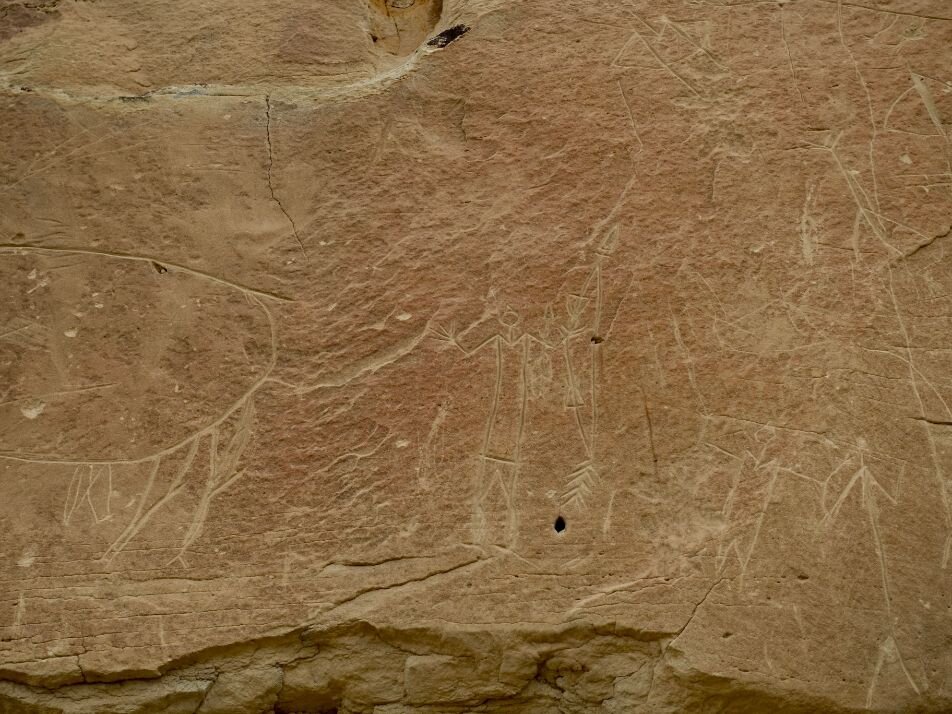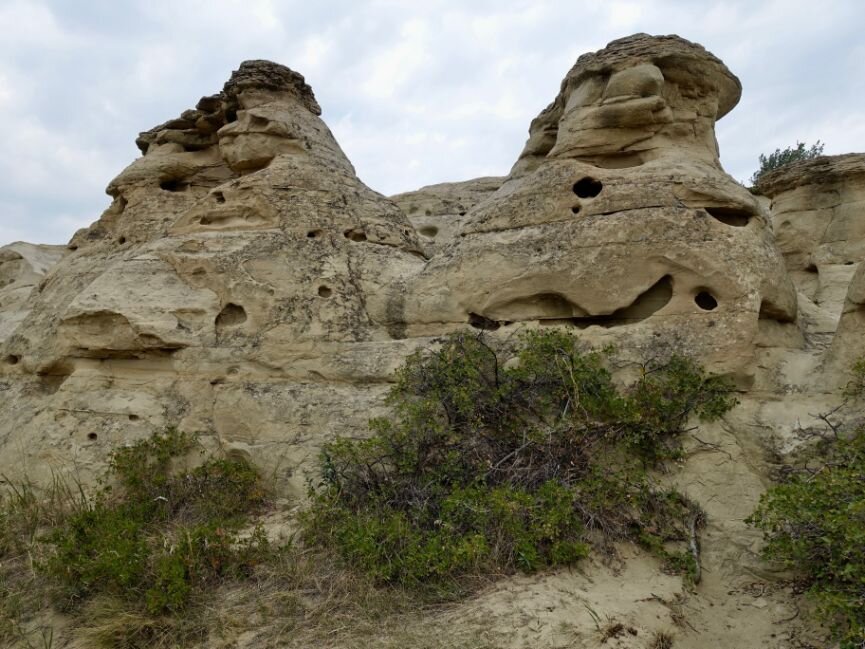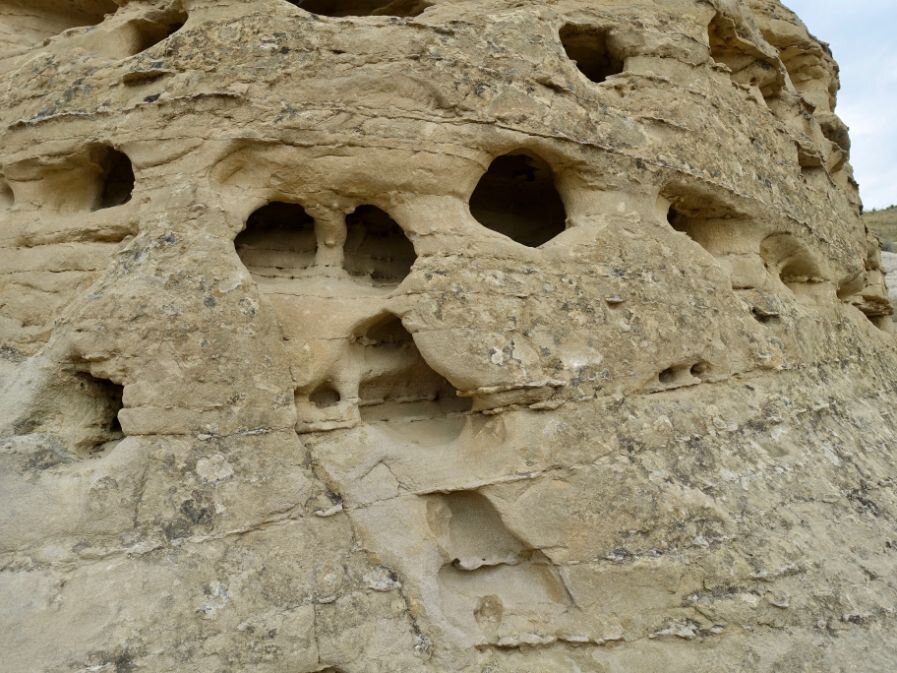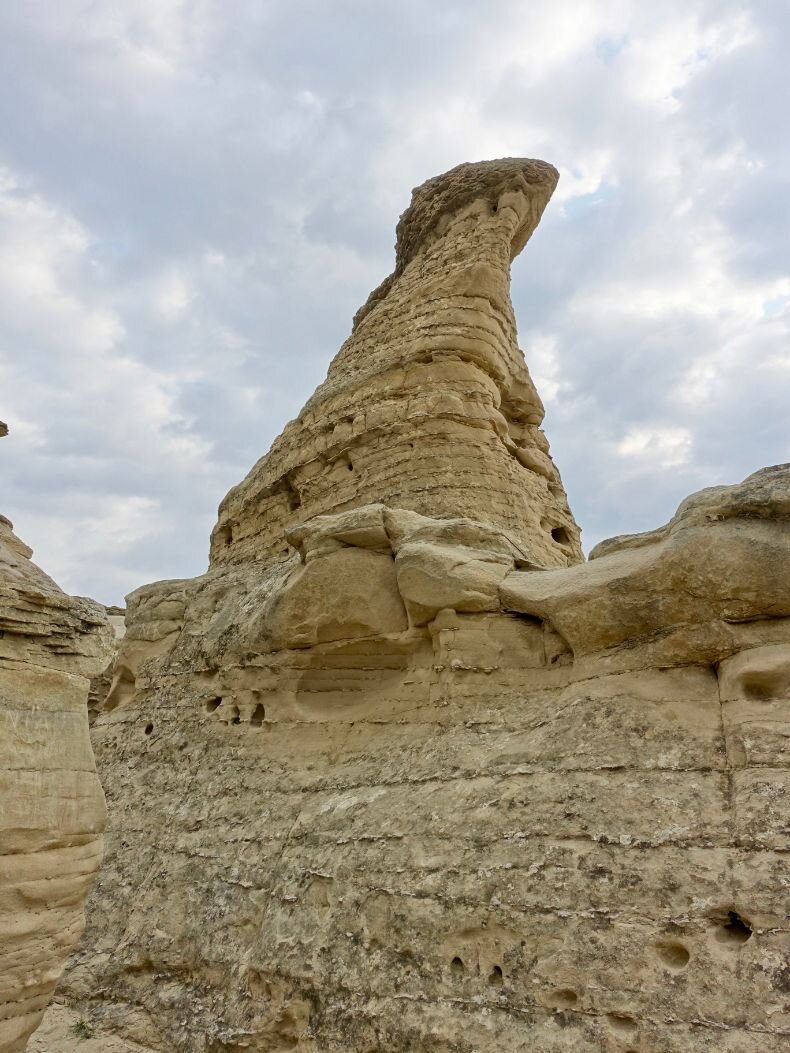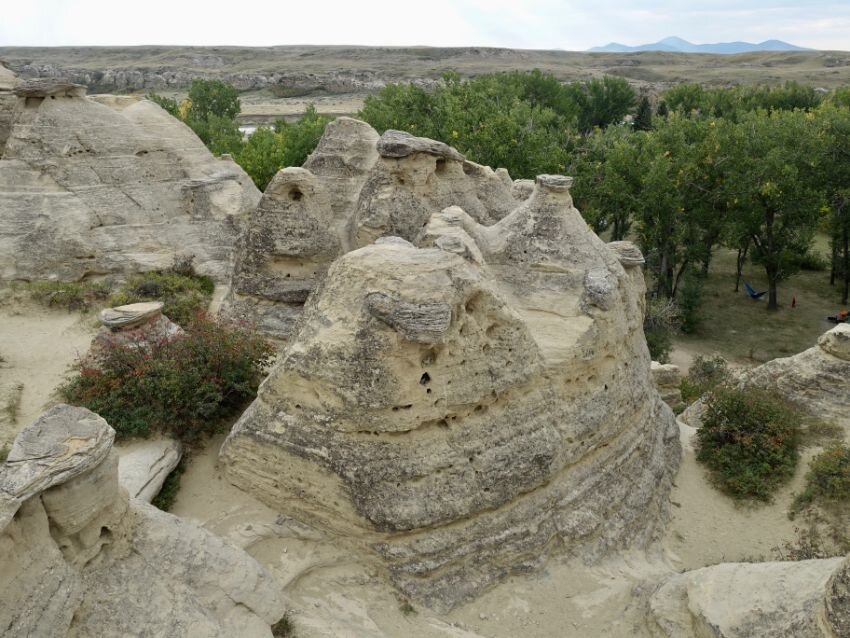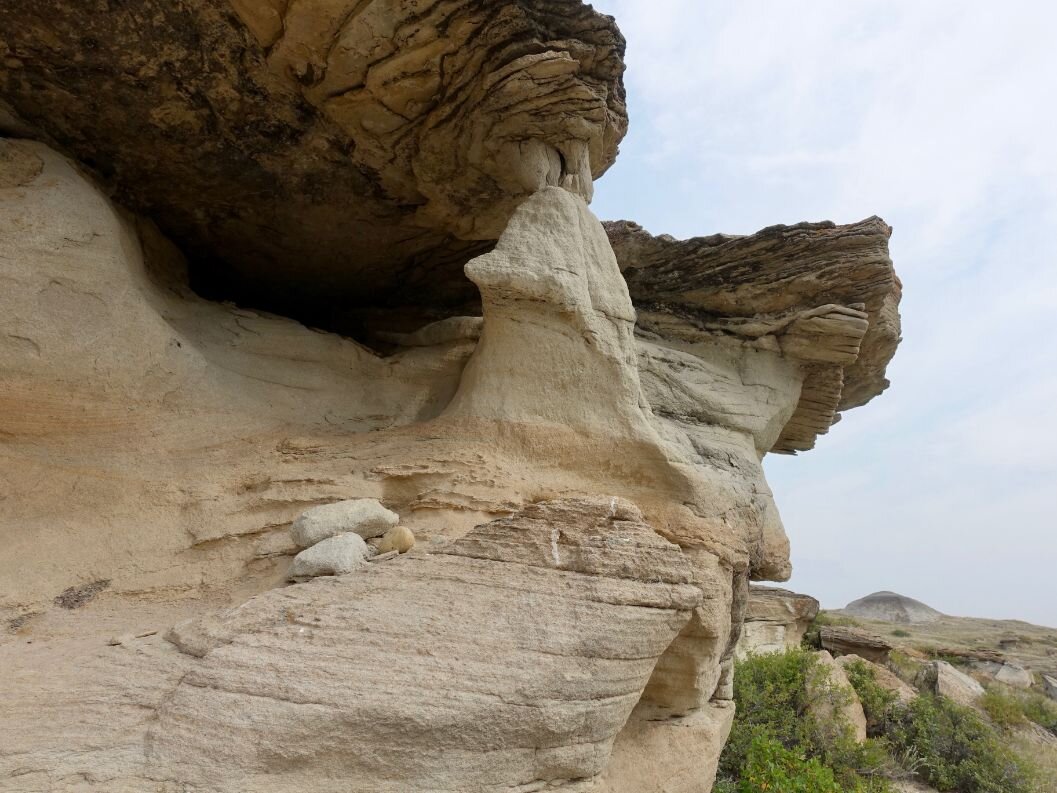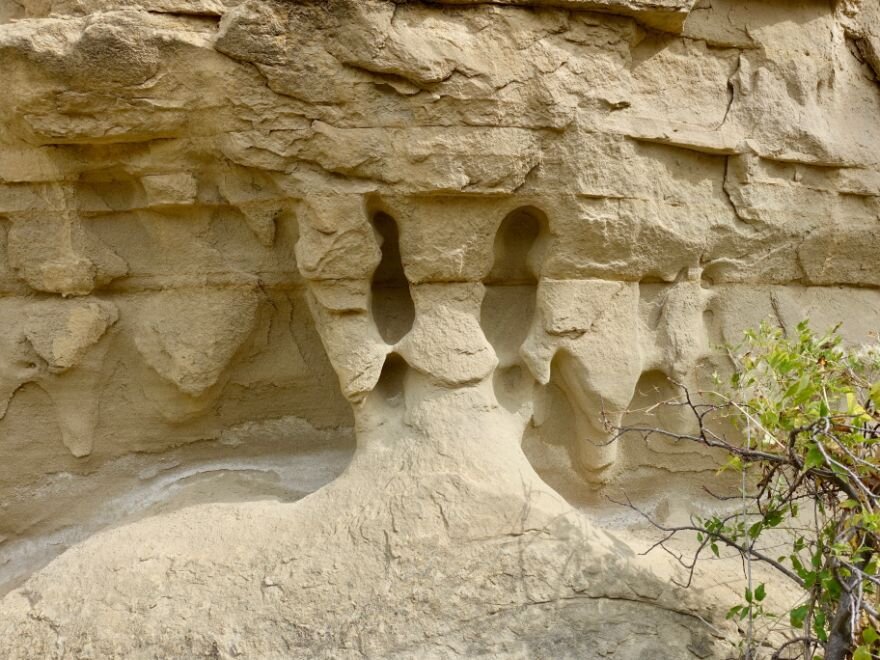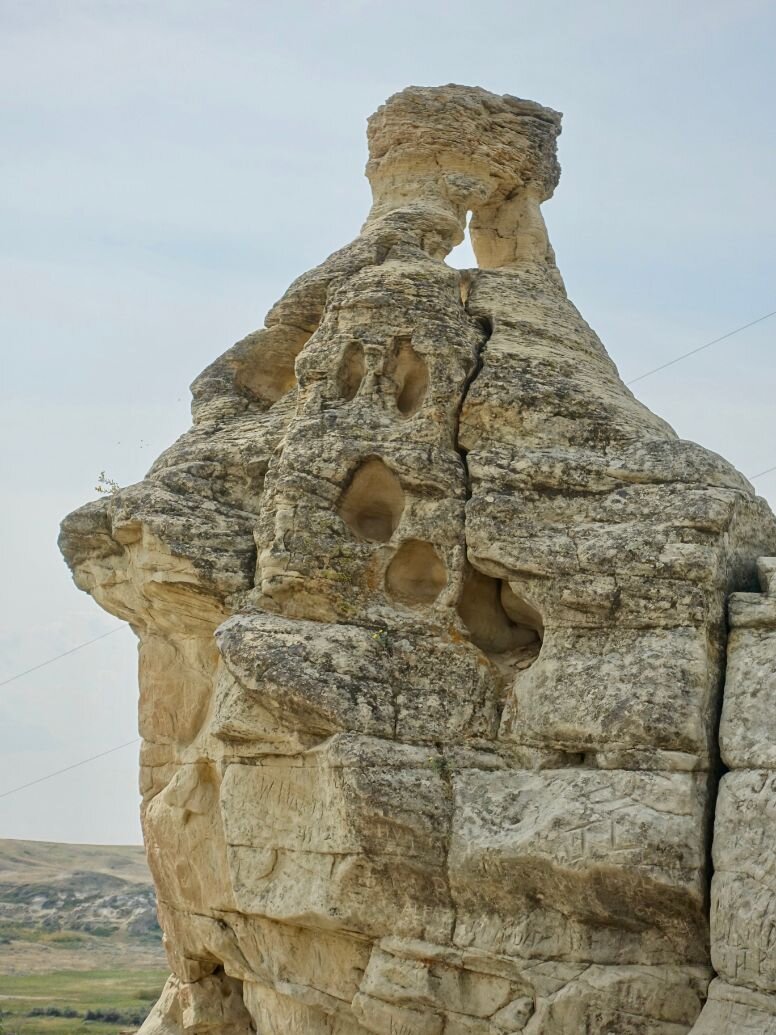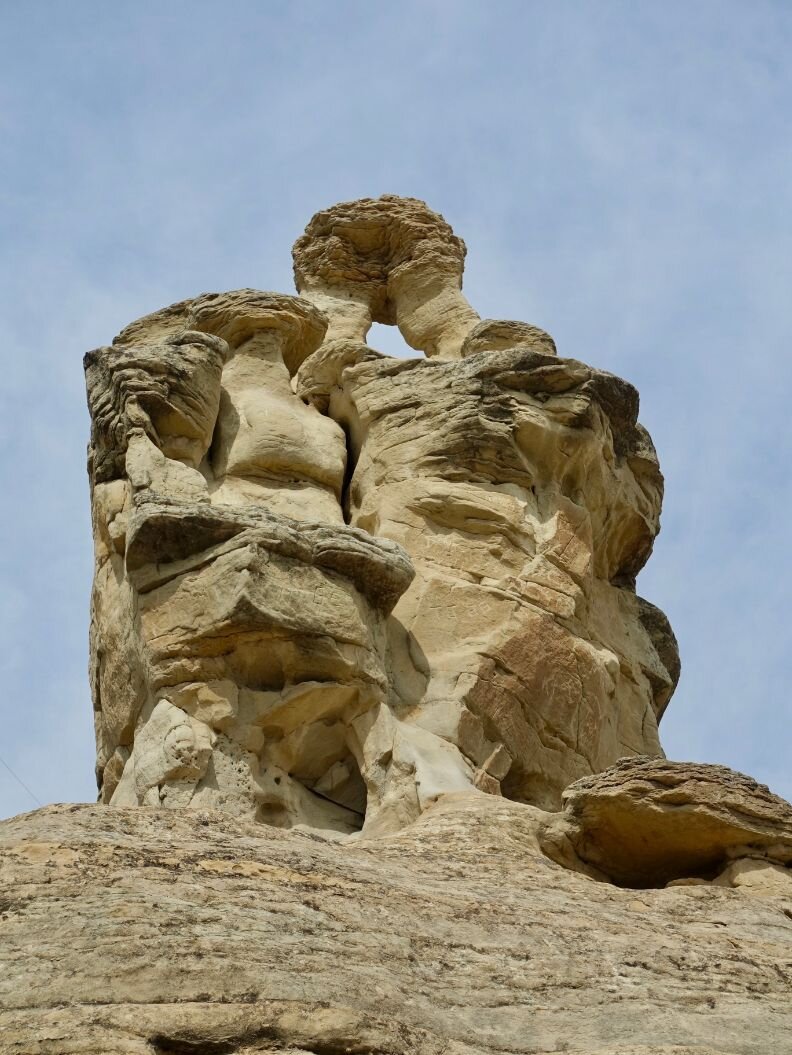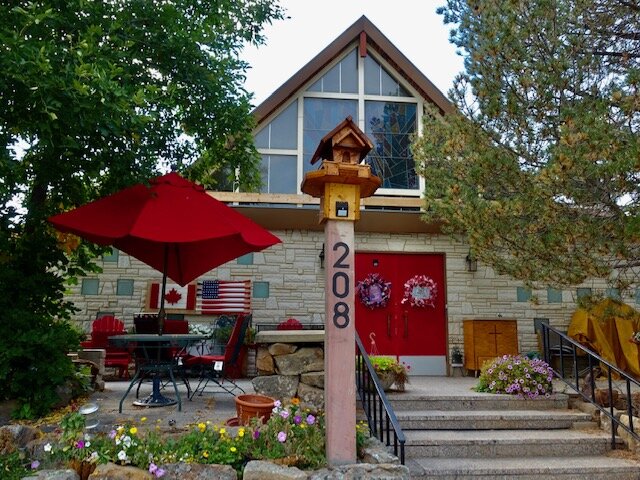Writing-On-Stone A Sacred Place: Past, Present & Future!
I have known about Writing-On-Stone Provincial Park - with its hoodoos and petroglyphs - ever since moving to Calgary in 1981, but it took me 40 years to actually visit. How stupid was that! Yes, it is a bit off the beaten path – 40 km east of the small town of Milk River - but that is no excuse.
While I had seen photos of the hoodoos, I had no idea how extensive they were - stretch kilometers east and west of new Visitor Center. And the hoodoos are back to back to back, not like the ones on Highway 10 east of Drumheller. A literal sea of hoodoos – I had no idea.
We arrived to the sun radiating through the clouds creating a surreal setting that evoked a sense of this being a sacred space.
Sea of hoodoos looking east from the Visitor Centre.
Sea of hoodoos looking west from the Visitor Centre.
Rock Art
The Park is also known for having the highest concentration of indigenous rock art in North America with its 50+ petroglyph sites and thousands of works. We took one of the guided tours which was not only very informative, but very useful too as the rock paintings and petroglyphs are easy to miss. (FYI: Technically, rock carvings are called petroglyphs and rock paintings pictographs.)
Divided into two sections, the Park has one that is open to the public and one that is closed as it has several active archeological digs. Our tour guide took us in a van into the archeological side which allowed us to get up close to three sites with indigenous artworks.
She was excellent at explaining the meaning of the images, having worked with Blackfoot elders to gain an understanding of the indigenous stories and iconography.
For example, the size of the figure indicates the importance of the person, not necessarily their physical size. We also learned that a “V” neckline of a figure represents a male while a “U” neckline is a females. She also pointed out other things like the bullet holes likely made by bored young North West Mounted Police (NWMP) in the late 1800s, using the art for target practice. I was surprised at the number of people who had carved their names and dates in the stone. Turns out that early pioneers started the practice back in the late 1800s and it was only outlawed in the 1950s.
After our guided tour (one hour tour, plus 15 minutes each way in the van), we were dropped off at the western edge of the official Hoodoo Trail and wandered the 2.5 km back to the Visitor Center, weaving our way through the maze of hoodoos. Every twist and turn offered not only new formations, but different views of the Milk River valley and the Sweet Grass Hills in Montana (which are another sacred place for the Blackfoot).
You can see the original NWMP station on the other side of the river, which you are free to visit if you are adventuresome enough to cross the Milk River (via swimming or paddling). The buildings have not been restored and are not open to the public, but plans are to do so in the future.
An excellent self-guided tour of the Hoodoo trail that includes 10+ stops helps you appreciate the history of the area and identifies where you can find more paintings and petroglyphs. It is definitely worth picking up a copy at the Visitor Centre.
The Centre has films and exhibitions cases that also helps everyone appreciate the importance of this site to the Blackfoot people and why it is a sacred place for them.
Did you know? Milk River got its name from the famous American explorers Lewis and Clark who when they saw the river, thought the colour looked like “tea with milk” so they named it the “Milk River.”
This was the first petroglyphs that we saw. The holes in the animal on the left (buffalo) are bullet holes. The piece broken off on the left edge happened naturally. We were told that the Blackfoot want the rock art to age naturally from now on, so there is no attempt to restore or preserve them.
Detail of the petroglyphs above.
Detail of right side of the above petroglyphs.
The faint red blobs in this photo are in fact rock paintings.
I took this photo thinking the wagon was vandalism, but I turns out that it was carved in the 1920s, by a pioneer with and elder who travelled together to see the rock art.
Another petroglyphs site
What I thought at first were more bullet holes turns out to be stars or a constellation.
The image at the top right of this photo show the two peaks of the Sweet Grass Hills that you can see in the distance looking south from Writing-on-Stone.
Sweet Grass Hills on the horizon looking south from the Hoodoo Trail.
One of the stops on the Hoodoo Trail is The Battle Scene petroglyphs site which is protected by a cage that doesn’t allow the public to get near the art. This is the most extensive and complex rock art scene in the park with over 250 characters - 115 warriors, some with bows and or guns, 17 horses, some pulling travois and 44 guns. Unfortunately the visibility of the characters is difficult, depending on the time of day, light conditions and time of the year. It was very hard to see all the characters the day we were there.
It is thought The Battle Scene is that of one of the most decisive of Aamsskaapipikani victories, where they defeated a combined war party of Gros Ventre, Crow and Plains Cree who lost more than 300 warriors in 1866.
If you look carefully you can see the circles and what looks like the guns.
Detail of guns with bullets being fired.
Detail of the camps with warriors
I found this rock which looks like it might have some rock paintings along the Hoodoo Trail, but it was not identified as such so perhaps it is just vandalism.
The Sculptures
The Kiss…at least that is what it looks like to me.
When we got out of the van I immediately notice the Inukshuk like rock on cliff to the west. When I asked our guide about it, she informed us it is called Table Rock, a sacred place for the Blackfoot where young men often went to on their vision quest. A vision quest is a period of isolation with no food to induce hallucinations and visions of the creator and ancestors that is unique to each individual. It as part of the transition from childhood to adulthood for many Indigenous peoples. Link: Vision Quest
Last Word
Writing-on-Stone was declared a UNESCO World Heritage Site, in 2019, with the official name being Aisinai’pi, which is Blackfoot for “it is pictured/written.” For centuries, the area has been a sacred place for the Blackfoot nation and I now see why. I can only begin to imagine what it must have been like for nomadic, indigenous people to come upon these strange rock formations and wonder who made them. I can now understand how they would become a scared place for them to visit annually and reflect on the meaning of life - past, present and future.
The original Northwest Mounted Police buildings on the other side of the river.
If you go!
Most people visiting the park stay at the Park’s campsite on the edge of the Milk River given there is only one modest motel in the town of Milk River. But if you are into Bed & Breakfasts, there is the Old Church in Warner, a 40-minute drive from the Park. This decommissioned Catholic Church, with its modern design has been converted into a funky B&B. The hosts are very welcoming and the eclectic common area (50 feet by 50 feet) is lined with bookshelves jammed with books and collectables, that makes for interesting stories. Alternatively you could stay in Lethbridge an 80 minute drive from the park.
The Park has no convenience store, so be sure to pick up any food etc. you might need in Milk River or bring it with you.
And it is recommended you book your tour online before you arrive. We did an early morning tour as afternoons can get quite hot with temperatures 35+ next to the rocks is not uncommon. Give yourself lots of time - we spent about 4 hours in the park – but you could easily spend all day.
The Park is open from middle of May to middle of October. With tours only on weekends in early spring and later summer/fall. Be sure to check hours and availability of programs before you go.
If you like this blog, you will like these links:
Crowsnest Highway: Red Rock Coulee & Other Hidden Gems







